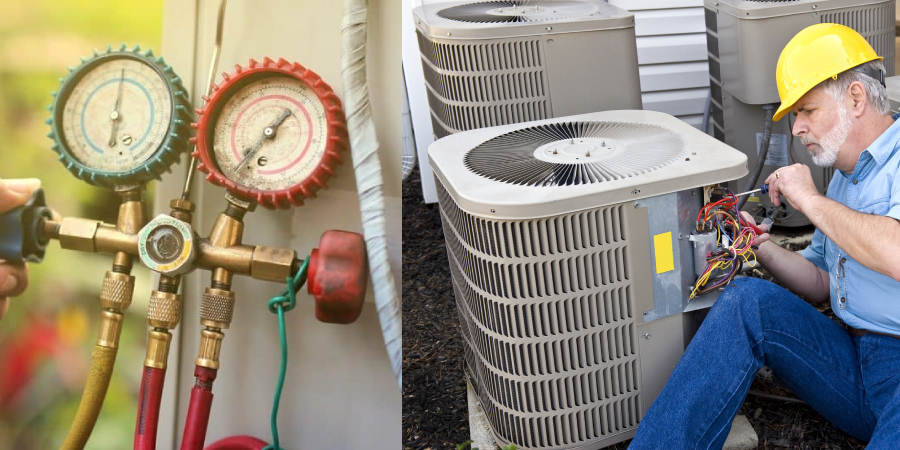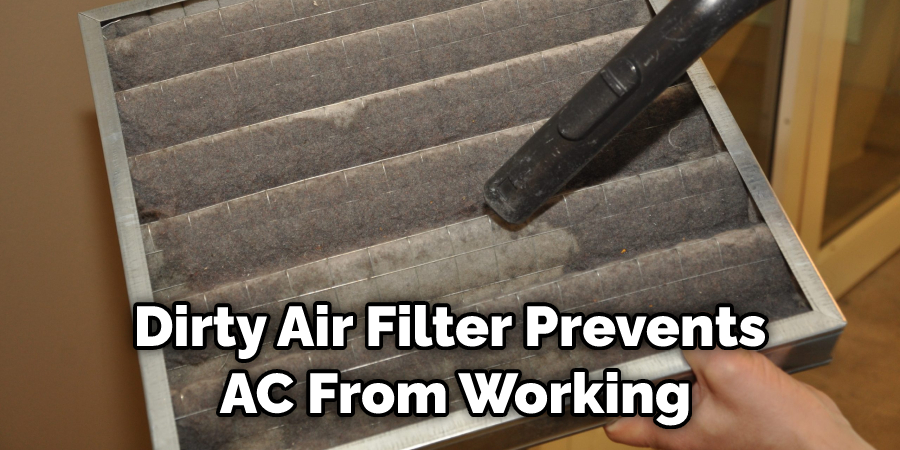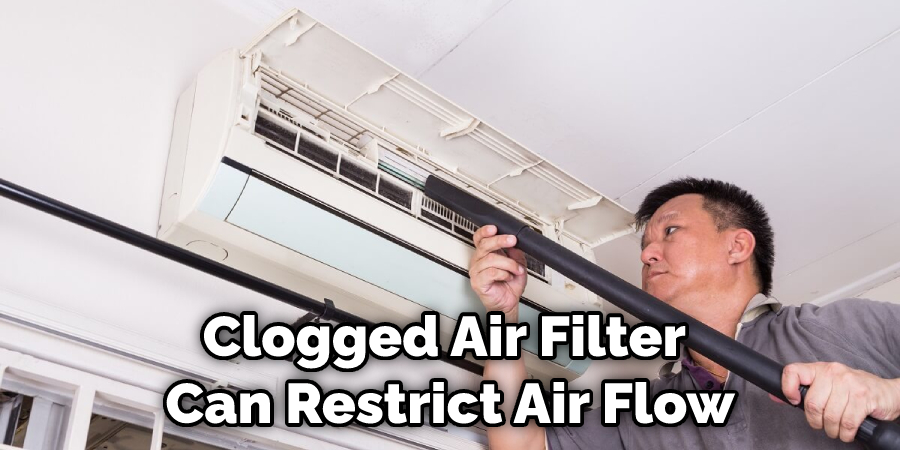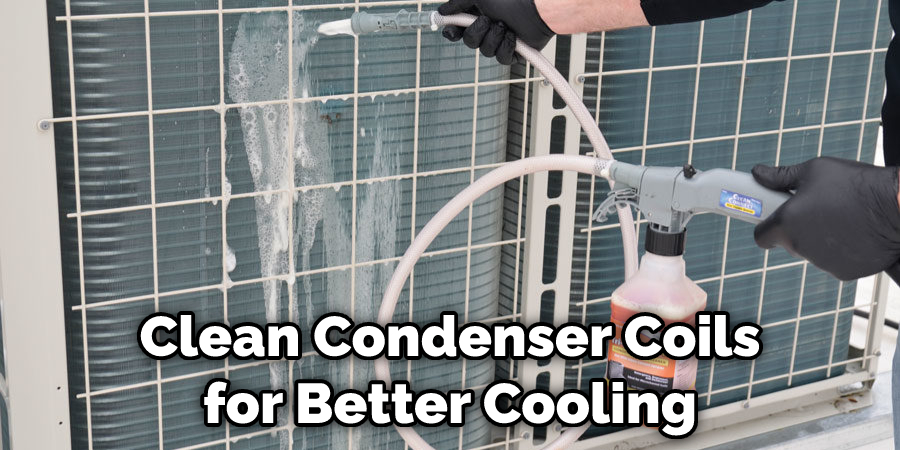Air conditioners are a common household appliance found in most homes across the United States. Though they provide comfort during summer, they can also be a hassle when they break down. If your air conditioner is not blowing cold air, there are a few things you can check yourself before calling for service.

This blog post will go over the most common causes of fl on air conditioners and how to fix fl on air conditioners. We will also cover some basic maintenance tips that can help keep your AC running smoothly throughout summer. Keep reading for more information!
Summary: If your air conditioner is not cooling your home as it should, there are a few things you can do to try and fix the problem. First, make sure the unit is properly installed and functioning. Second, check the filters. Finally, clean the condenser and evaporator coils.
10 Reasons That Causes Fl Error on Air Conditioner:
1. Dirty Air Filter:
One of the most common reasons why your AC unit might not be blowing cold air is a dirty air filter. When the air filter is full of dust, dirt, and other airborne particles, it can restrict airflow and prevent your AC from working properly. If you notice that the air filter looks dirty, be sure to replace it with a new one.
2. Thermostat Settings:
The air conditioner will not turn on if the thermostat is not set to “cool” or if the temperature is set too low. Make sure the thermostat is set to “cool” and adjust the temperature to the desired level. If the thermostat does not seem to be working, test it with a multimeter.
3. Refrigerant Leaks:
If your AC is not working properly, it may be because it is low on refrigerant. Refrigerant is a substance that helps keep the AC unit cool. If there is not enough refrigerant, the AC unit will have to work harder to reach the desired temperature, which can waste energy and damage the compressor. If you think there may be a refrigerant leak, you should call a professional AC repair technician. You can also use a refrigerant leak detection kit to check for leaks.

4. Dirty Condenser Coils:
If the condenser coils on your AC unit are dirty, it will cause the unit to work harder and use more energy. Clean the coils at least once a year, or more often if they are exposed to dirt and debris. If the coils are severely dirty, you may need to replace them. TIP! Every spring you should clean the coils and fan blades on your condenser fan. Don’t forget to disconnect the power first.
5. Fan Problems:
A malfunctioning fan is often the reason why an AC unit fails to blow cold air. The fan is responsible for circulating air and helping to cool the refrigerant. If it’s not working properly, the AC will be unable to properly cool the air. To check if the fan is the problem, see if it’s spinning. If it’s not, try resetting the AC unit. If that doesn’t work, you may need to replace the fan.
6. Frozen Evaporator Coils:
The evaporator coils inside your AC unit absorb heat from the air, causing the refrigerant to evaporate. If the coils are frozen, they will not be able to absorb enough heat, and the AC will blow warm air. One way to thaw the coils is to turn off the AC and let it sit for a few hours. Another way is to use a hairdryer on the low setting.
7. Electrical Issues:
Electrical issues are another common cause of an AC not blowing cold air. If the unit is not receiving enough power, it will not be able to operate properly. Check the circuit breaker and ensure the AC is plugged into a working outlet. If you suspect there may be a more serious problem, call an electrician. When the AC receives enough power but isn’t working, the problem may be with the unit itself. In this case, you’ll need to call a repairman.

8. Clogged Drain Line:
A clogged drain line is one of the most common causes of AC problems. The drain line gets clogged with dirt, dust, and other debris over time, which can cause water to leak from the unit. If you notice water leaking from your AC unit, it’s likely that the drain line is clogged and needs to be cleaned.
To clean the drain line, shut off the power to the unit. Next, remove the cap from the drain line and use a wet/dry vacuum to suck out any debris clogging the line. Once the line is clear, replace the cap and turn on the power to the unit.
9. Ice on the Evaporator Coils:
Ice on the evaporator coils is an indication that your air conditioner is not working properly. If you see ice on the coils, turn off the unit and call a professional for help. If you think the problem is with the coils, you can try thawing them with a hair dryer. You can also use a small brush to remove any debris blocking the coils.
10. Unit Not Sized Properly for the Space:
An oversized unit will short cycle, which means it will turn on and off frequently. This wastes energy and increases wear and tear on the unit, making it more likely to break down prematurely. Conversely, an undersized unit will run constantly and never reach the desired temperature. Consult a professional HVAC contractor to find the right sized air conditioner for your home.
Step by Step Procedure: How to Fix Fl on Air Conditioner
Step 1: Check the Air Filter.
The first thing you should do when your air conditioner is not working is check the air filter. A clogged air filter can restrict air flow, causing your air conditioner to work harder to cool your home. This can lead to a frozen coil.
Step 2: Check the Thermostat.
If the air filter is not the problem, you should check the thermostat next. If the thermostat is set too low, it could be the reason why your air conditioner is freezing up. Make sure the thermostat is set to the correct temperature.

Step 3: Clean the Condenser Coils.
If the air filter is clean and the air conditioner’s blower is running, the next thing to do is clean the condenser coils. Dirty condenser coils will prevent air from flowing through the coils, which reduces the unit’s ability to cool your home.
To clean the coils, turn off the power to the unit at the breaker box. Next, remove the fan guard so you can access the coils. Next, use a soft brush to remove any dirt and debris from the coils. Finally, rinse the coils with a hose to remove any remaining dirt and debris.
Step 4: Clean the Air Conditioner’s Filters.
One of the most common reasons for an air conditioner to freeze is the dirty filters. When the filters are full of dirt and debris, it blocks the airflow and causes the unit to work harder than necessary.
This can lead to ice buildup and eventually a frozen air conditioner. To clean the filters, first, turn off the air conditioner. Then, remove the filter and rinse it with warm water. Finally, let the filter dry completely before putting it back in place.
Step 5: Check the Air Flow.
Another reason why your air conditioner may be freezing is because of restricted airflow. This can be caused by a dirty evaporator coil, a closed or blocked air vent, or a failing blower motor.
First, turn off the air conditioner at the breaker box to check for restricted airflow. Then, remove the access panel and look for any dirt or debris blocking the airflow. If you find anything, remove it and turn on the air conditioner to see if it works properly.
Step 6: Inspect the Evaporator Coil.
The evaporator coil is responsible for absorbing heat from your home. If the coil is dirty, it won’t be able to do its job properly. Use a brush to clean the coil, and ensure no debris is blocking the airflow.
When the coil is clean, the air conditioner will be able to cool your home more effectively. If the evaporator coil is not the problem, then the next step is to inspect the air filter. The air filter is responsible for keeping the air inside your home clean.
Step 7: Replace the Air Filter.
If the air filter is dirty, it can block the airflow and cause the air conditioner to freeze. First, turn off the air conditioner at the breaker box to replace the air filter. Then, remove the old air filter and insert a new one. Next, ensure the new air filter is the correct size for your air conditioner. Finally, turn on the air conditioner to see if it works properly.
If you have followed all of these steps and your air conditioner is still not working, you may need to call a professional for help. A professional can diagnose the problem and make the necessary repairs.
You Can Check It Out To Fix a Portable Air Conditioner

Frequently Asked Questions
Do I Reset My Air Conditioner?
Resetting your air conditioner does not actually achieve the desired cooling effect. In fact, it can have a negative impact on your AC unit and may even cause other damages. Instead of resetting your AC, you should try to adjust the temperature using the vents or buttons located on the front or side of your unit.
What Does Fl Mean on My Air Conditioner?
Fl is an abbreviation for “freon,” and this gas is often used in air conditioners to lower the temperature. Freon has been linked to health problems, including headaches, nausea, flu-like symptoms, temporary hearing loss, and more. It’s important to be aware of the dangers associated with using freon in your air conditioning system and replace it as soon as possible if you suspect that it might be a problem.
Why is My Ge Portable Ac Flashing Fl?
it may be the wrong type of battery, or there may be a problem with the ac adapter. If it is a low battery, you can charge it with the AC adapter or by connecting it to a power source using the USB cable. If it is the wrong type of battery, you can interchange the batteries. If there is a problem with the ac adapter, you can try to troubleshoot by following these steps:
- Make sure that the power cord is securely plugged into an outlet and into the ac adapter
- Check that all cables are plugged in correctly (AC adapter and USB cable)
- Try turning on the ac adapter and your computer – if it doesn’t work, then there may be a problem with either the ac adapter or your computer
- If none of these steps help, then you will need to take your computer to an authorized service center.
What Happens if You Don’t Drain Your Portable Air Conditioner?
If your portable air conditioner isn’t drained, it can slowly over time release moisture and bacteria that can cause serious health problems. This includes Legionnaires’ disease, a form of pneumonia caused by the inhalation of Legionella pneumophila particles. In severe cases, this can lead to death.
To prevent this from happening, make sure to completely drain your air conditioning unit every month or whenever you notice an increase in humidity levels.
Conclusion
Although the previous tips should have helped to correct your air conditioner’s fl, there are a few more things you can do as a last resort. If these measures still don’t work, it may be time to call in a professional. AC repair companies have the expertise and equipment necessary to diagnose and solve any HVAC issue, big or small.
We hope this article on how to fix fl on air conditioner helped troubleshoot your air conditioner. Don’t let your home become an oven this summer; take action now and fix your AC unit before it’s too late! Have you tried all these steps to fix your air conditioner’s fl? What was the outcome? Share your thoughts in the comments below!
You May Also Read: How to Fix Leaking AC Unit
